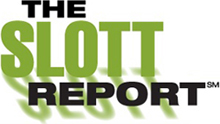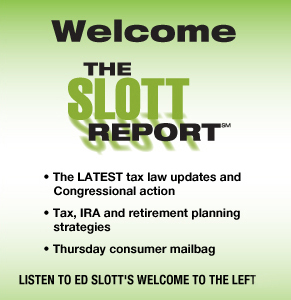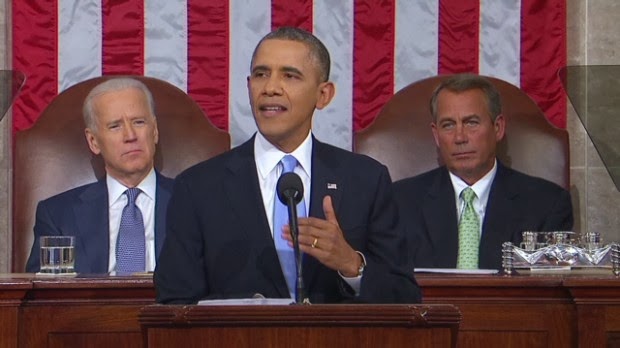Last week President Obama delivered his State of the Union address to the nation and introduced us all to a new type of retirement account, the myRA. Since then, the ins and outs of the new accounts have been minced and parsed in just about every way imaginable.
Although opinions vary, a large portion of the financial community has come down hard on the new accounts. Now don’t get me wrong, I don’t think myRAs are the perfect retirement account, nor do I think they are going to resolve our looming retirement crisis, but for the right type of person, they can certainly be of use.
So why have so many in the financial community come down against myRAs? There are a number of reasons, many of which have merit, such as the lack of investment options available in the account (a government bond portfolio will be the only option). Others, however, have attacked the myRA rather unfairly.
For instance, I recently read an article in which an advisor was quoted saying,
“I would strongly advise against this option. For savers, I first recommend that they have an emergency fund equal to 6 months of expenses in a bank account. Once this goal is met, only then should they open a retirement account.”
This makes very little sense to me, but not because I'm against having an emergency fund. I'm all in favor of making sure you're prepared for the proverbial "rainy day." Rather, it makes no sense to me because a myRA is an excellent way to start or add to an emergency fund. To put it another way, the myRA can lead a double life. It can be a retirement account that masquerades as an emergency fund.
Common sense tells you that an emergency fund should be safe and available when you need it. The myRA accomplishes both. According to both the White House and the Treasury Department, the myRA will be 100% guaranteed, backed by the full faith and credit of the United States. That takes care of safe. Furthermore, since the myRA is actually a special type of Roth IRA, contributions can be withdrawn at any time, tax and penalty free. That sure fits my definition of available when you need it.
Let's not forget that the purpose of an emergency fund is for emergencies. Yet, hopefully those emergencies never materialize. With the myRA, you can plan for the worst and hope for the best, all at the same time. If an emergency does arise, you can use all or a portion of your myRA contributions to meet the unanticipated expense. On the other hand, if you’re lucky and your rainy day never comes, you've jumpstarted your retirement savings.
Another reason that large numbers of advisors have railed against the myRA is the fact that it can only accumulate up to $15,000. Here's what another advisor, in the same article I referenced earlier, had to say… “While every dime helps in retirement, it’s hard to see how this amount of money would affect someone over a possible 25-year retirement.”
Really? I, for one, would beg to differ. Why couldn't he have just stopped after "every dime helps?" Who could argue with that? Of course $15,000 can make a difference! Consider the following example to illustrate my point:
Is it still hard to see how a retirement could be affected by myRA contributions? I didn't think so. Sure, $220,000 won't be enough to fund most retirements, especially 35 years from now, but it's a solid start.
Another reason advisors have come down against myRAs is that there are other retirement account options that are better. Quoting from the same article again, one advisor said “Don’t bother with MyRA. All employees that work for a company that offers a 401k plan with an employer match should start there,” while another said, “I would not advise anyone to use the MyRA account. If your employer has a 401k or ROTH 401k option, that should be the first vehicle to use, especially if there is some form of match.”
OK, I don't disagree with the idea that if you have an employer plan that offers a match, that’s generally going to be a better place to save. However, a myRA is not targeted to those with access to company plans!
Instead, it's aimed at young workers who are just starting to save and those with limited resources. Don’t believe me? Here’s what the Treasury Department myRA Fact Sheet has to say about who myRAs were created to help.
So yes, I completely agree; if you have a 401(k) or some other plan with a match, by all means start saving there. But then also know this... the myRA wasn't created for you! To dismiss the myRA’s potential for all savers - to go so far as to say “I would not advise anyone to use a myRA” because some people have a better option doesn't make any sense to me.
If that logic were to apply, why not get rid of Roth IRAs altogether because some people have access to Roth 401(k)s where the company will match contributions. No one would ever suggest that because that would just be crazy talk. A lot of people don’t have those company-match Roth 401(k)s, or Roth 401(k)s at all for that matter. For that portion of the population, the Roth IRA is a useful tool. Similarly, the myRA can be a useful tool for a certain segment of the population.
So here’s my final thought. Is the myRA perfect? No, far from it, but it does present an opportunity to help jumpstart at least some people’s retirement savings. It’s another choice. Another option to consider. No one is requiring anyone to participate. If you don’t think it’s right for you (or your client), don’t use one.
Accept the myRA for what it is. It’s an incubator account. A retirement account designed for the young or those with minimal income to save until they have saved enough or have the means to move on to something bigger and better.
- By Jeffrey Levine and Jared Trexler
Although opinions vary, a large portion of the financial community has come down hard on the new accounts. Now don’t get me wrong, I don’t think myRAs are the perfect retirement account, nor do I think they are going to resolve our looming retirement crisis, but for the right type of person, they can certainly be of use.
So why have so many in the financial community come down against myRAs? There are a number of reasons, many of which have merit, such as the lack of investment options available in the account (a government bond portfolio will be the only option). Others, however, have attacked the myRA rather unfairly.
For instance, I recently read an article in which an advisor was quoted saying,
“I would strongly advise against this option. For savers, I first recommend that they have an emergency fund equal to 6 months of expenses in a bank account. Once this goal is met, only then should they open a retirement account.”
This makes very little sense to me, but not because I'm against having an emergency fund. I'm all in favor of making sure you're prepared for the proverbial "rainy day." Rather, it makes no sense to me because a myRA is an excellent way to start or add to an emergency fund. To put it another way, the myRA can lead a double life. It can be a retirement account that masquerades as an emergency fund.
Common sense tells you that an emergency fund should be safe and available when you need it. The myRA accomplishes both. According to both the White House and the Treasury Department, the myRA will be 100% guaranteed, backed by the full faith and credit of the United States. That takes care of safe. Furthermore, since the myRA is actually a special type of Roth IRA, contributions can be withdrawn at any time, tax and penalty free. That sure fits my definition of available when you need it.
Let's not forget that the purpose of an emergency fund is for emergencies. Yet, hopefully those emergencies never materialize. With the myRA, you can plan for the worst and hope for the best, all at the same time. If an emergency does arise, you can use all or a portion of your myRA contributions to meet the unanticipated expense. On the other hand, if you’re lucky and your rainy day never comes, you've jumpstarted your retirement savings.
Another reason that large numbers of advisors have railed against the myRA is the fact that it can only accumulate up to $15,000. Here's what another advisor, in the same article I referenced earlier, had to say… “While every dime helps in retirement, it’s hard to see how this amount of money would affect someone over a possible 25-year retirement.”
Really? I, for one, would beg to differ. Why couldn't he have just stopped after "every dime helps?" Who could argue with that? Of course $15,000 can make a difference! Consider the following example to illustrate my point:
Bill is 20 years old and begins to work. He establishes a myRA and, through his employer, begins to have small amounts from each of his paychecks withheld and deposited into a myRA. Now let's further suppose that over the next 10 years, Bill continues to contribute to his myRA account until at last, when he reaches 30, his account balance reaches $15,000. This seems like a reasonable possibility, right?
At that point, under the current myRA rules, Bill would be forced to roll over his myRA account to a private Roth IRA. Now, in his private Roth IRA, Bill makes more traditional investments and earns 6% per year. By the time Bill reaches 65 and retires, that $15,000 will have grown to over $115,000. If Bill can do just a little better and earn 8% a year, that original $15,000 will have grown to over $220,000 by the time he retires!
Is it still hard to see how a retirement could be affected by myRA contributions? I didn't think so. Sure, $220,000 won't be enough to fund most retirements, especially 35 years from now, but it's a solid start.
Another reason advisors have come down against myRAs is that there are other retirement account options that are better. Quoting from the same article again, one advisor said “Don’t bother with MyRA. All employees that work for a company that offers a 401k plan with an employer match should start there,” while another said, “I would not advise anyone to use the MyRA account. If your employer has a 401k or ROTH 401k option, that should be the first vehicle to use, especially if there is some form of match.”
OK, I don't disagree with the idea that if you have an employer plan that offers a match, that’s generally going to be a better place to save. However, a myRA is not targeted to those with access to company plans!
Instead, it's aimed at young workers who are just starting to save and those with limited resources. Don’t believe me? Here’s what the Treasury Department myRA Fact Sheet has to say about who myRAs were created to help.
MyRA will be for savers who either do not have access to an employer-sponsored retirement savings plan or are looking to supplement a current plan. They will be designed for savers who want an investment with a low opening amount."
So yes, I completely agree; if you have a 401(k) or some other plan with a match, by all means start saving there. But then also know this... the myRA wasn't created for you! To dismiss the myRA’s potential for all savers - to go so far as to say “I would not advise anyone to use a myRA” because some people have a better option doesn't make any sense to me.
If that logic were to apply, why not get rid of Roth IRAs altogether because some people have access to Roth 401(k)s where the company will match contributions. No one would ever suggest that because that would just be crazy talk. A lot of people don’t have those company-match Roth 401(k)s, or Roth 401(k)s at all for that matter. For that portion of the population, the Roth IRA is a useful tool. Similarly, the myRA can be a useful tool for a certain segment of the population.
So here’s my final thought. Is the myRA perfect? No, far from it, but it does present an opportunity to help jumpstart at least some people’s retirement savings. It’s another choice. Another option to consider. No one is requiring anyone to participate. If you don’t think it’s right for you (or your client), don’t use one.
Accept the myRA for what it is. It’s an incubator account. A retirement account designed for the young or those with minimal income to save until they have saved enough or have the means to move on to something bigger and better.
- By Jeffrey Levine and Jared Trexler











